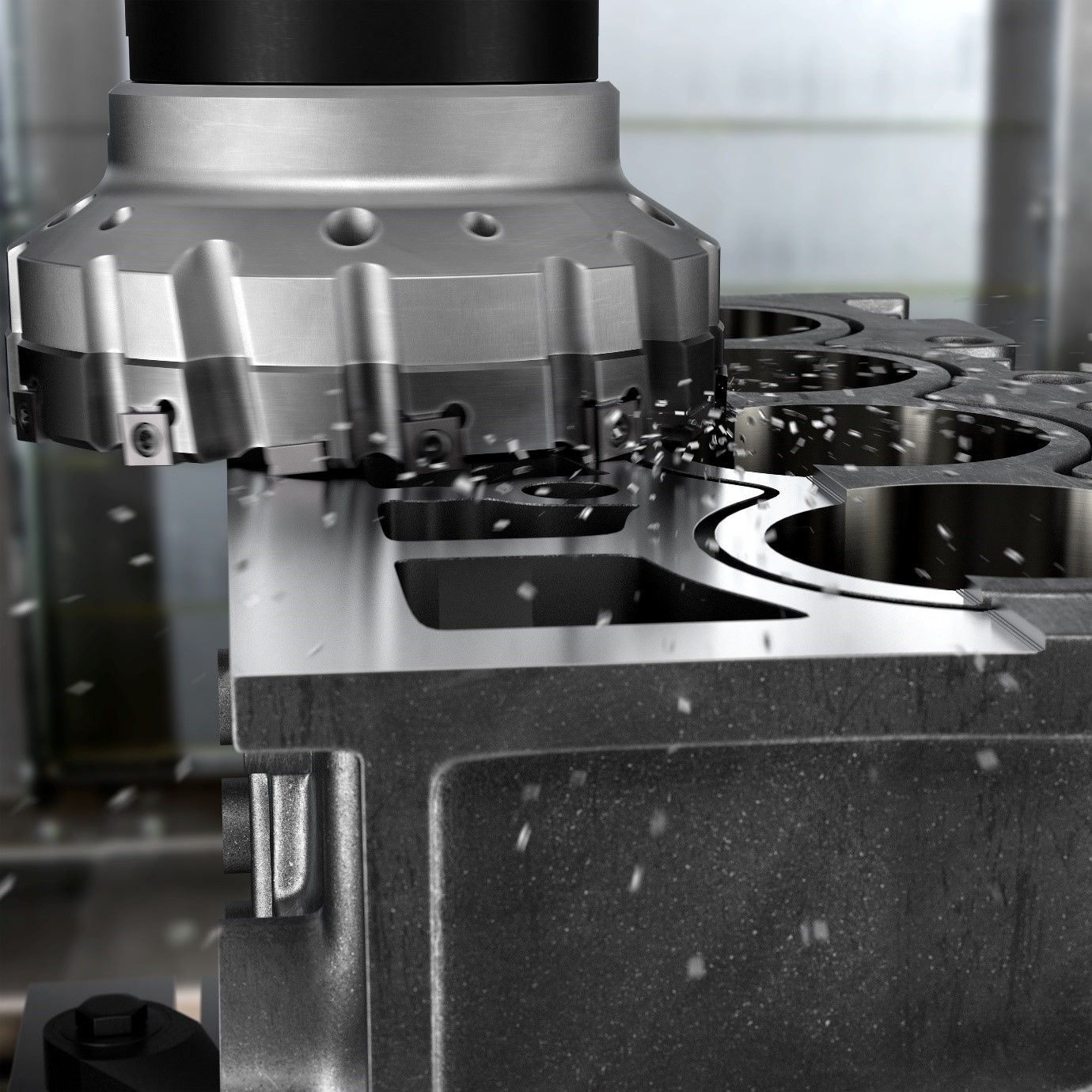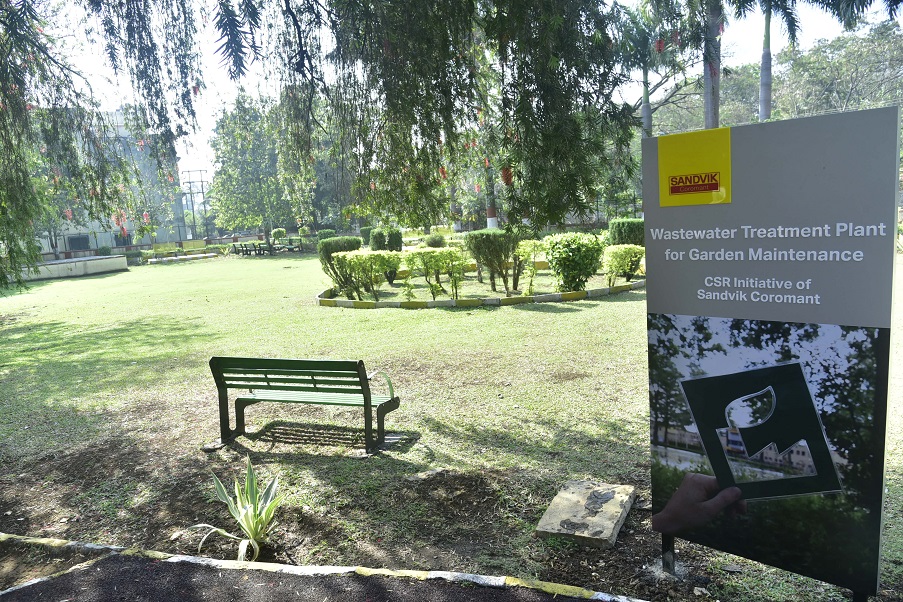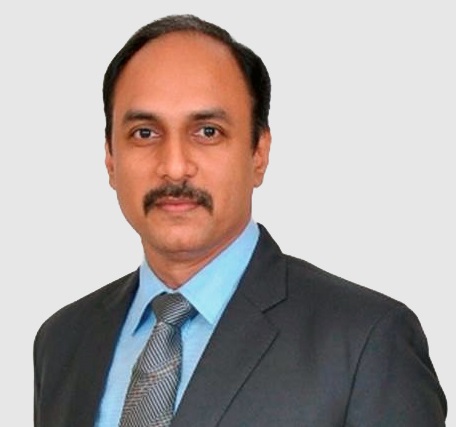Trends in the Metal Cutting Sector for Future

Supply chain resilience has been a thread weaved throughout the manufacturing industry in 2022. To combat ongoing uncertainties across the ASEAN region, more firms are turning towards India for resilience. In fact, we’re seeing an increasing dependency on the nation to help deliver in areas where others still face challenges. There are several trends that demonstrate India’s fortitude during the year, as Sunil Joshi, President, Sales, Sandvik Coromant India, explains.
It’s been a turbulent year in many respects. Across the globe, energy costs have increased by between 25 percent and 90 percent and, in extreme instances, by as much as 300 percent over the last year. The ongoing logistics disruptions stemming from the COVID-19 pandemic continue to impact businesses, creating a ripple effect across global supply chains. Furthermore, manufacturers are also faced with something of a sustainability paradox. On the one hand, there’s pressure to deliver products at higher speeds and at lower costs. On the other, they’re facing growing scrutiny from investors, partners, and local governments to adopt more sustainable ways of working.
But it’s not all doom and gloom. Despite encountering challenges that could easily throw the industry’s resilience into question, many manufacturers will enter 2023 having weathered the storm. In particular, we’re seeing India shape up to become an ASEAN supply chain hub. With a concerted effort from the Indian government to deliver better transport infrastructure, the country now has the world’s second-largest road and rail network. Furthermore, recent developments attest to the growing confidence in India as a manufacturing hub, such as Apple’s decision to manufacture its iPhone 14 in India.
With these challenges and potential in mind, let’s take a look at some of the trends impacting the metal cutting sector this year and beyond.
 |
Getting lighter
Two years into the 2020s, and the decade looks set to mark the beginning of a new shift in manufacturing—away from pure profit maximization and towards a growth approach that incorporates the health of the planet at its core.
Today, manufacturers find themselves having to meet the sustainability needs of a variety of stakeholders. Public awareness of how industry can damage the environment has put emphasis on businesses to change their ways, as they can now be held accountable more easily. In fact, there’s a rising number of consumers who will pay a premium for eco versions of a product, YouGov reports. Having strong sustainability credentials can also make a business more attractive to suppliers and shareholders, who have their own sustainability objectives to meet.
One way of satisfying the need for more sustainable products is to make them using lighter materials. If we take the aerospace industry as an example, pressure to lower air travel’s carbon footprint has placed an emphasis on making planes lighter, in order to save on fuel. Shedding weight will help bring down the high fuel consumption of planes. For instance, when United Airlines switched its in-flight magazine to lighter paper, it saved over 170,000 gallons of fuel a year. Every gram counts when making aircraft lighter, from large components such as the wing box, to intricate motors in reclining passenger seats.
Advances in materials have led to a variety of possibilities for aerospace companies. This has been seen through the increased use of composites and graphene, and also lightweight materials such as titanium. Other innovations in materials technology include the use of metal powers and additive manufacturing technologies to design lightweight and more sustainable metal parts.
Titanium is 30 percent stronger than steel, but nearly 50 percent lighter, making it a key component in addressing efficiency and sustainability challenges. However, machining materials such as titanium present its own challenges. Titanium alloys can have double the hardness of steel alloys, so when paired with titanium’s low thermal conductivity, high thermal and mechanical loads are placed on the tools tasked with cutting the metal. Manufacturers embracing the trend for lighter, yet more challenging, materials must therefore ensure they have access to the right cutting tools.
Elsewhere, automotive manufacturing is also undergoing a lightweight revolution. Here, we’re seeing manufacturers turn to aluminum to save weight and make vehicles more sustainable. But aluminum alloys require complex machining with complex and cost-intensive processes and various tools. In addition to very time-consuming tool setups, inferior surface finishes, burr formation, and inconsistent tool wear are not uncommon, and manufacturers must lean on the right tools to efficiently machine the material.
A connected machine shop
Since, and as a result of, the pandemic, we’ve seen manufacturers across the globe adopt digital technologies at an unprecedented speed. Findings suggest the speed of digital transformation has hastened by several years—as many as seven, according to McKinsey.
In India, strides towards digitalization are being seen, as Debjani Ghosh, President, National Association of Software and Services Companies (NASSCOM), reveals in NASSCOM and Capgemini’s India Industry Adoption: A Case to Mature Manufacturing Digitalization by 2025 report. In the report, he says: “Industry 4.0 has reached a tipping point in Indian manufacturing […]. Moving forward, it will be fascinating to watch how ready the Indian manufacturing industry is to adopt and scale Industry 4.0, which is largely determined by the use cases selected, the capacity to scale proofs of concept, and the alignment of information technology (IT) and operational technology (OT) capabilities.” The report also found that Indian manufacturers spent between US$5.5 and US$6.5 billion on Industry 4.0 technologies in 2021, with half that being spent on Cloud and IoT.
Achieving digitalization at scale requires a multitude of disciplines to come together, namely machining knowledge, OT, and IT, as well as more specific technologies such as artificial intelligence (AI) and big data. Uniting all these areas into a single strategy gives manufacturers the resilience to adapt to change, streamline operations, and future-proof themselves.
As companies seek to broaden their capabilities and digitalize, we’re seeing equipment providers and IT companies combine their niches to create a whole new level of value for their customers. This is a key part of Sandvik Coromant’s digital strategy, and will be for years to come. If we think of Sandvik Coromant’s niche, machining and metal cutting, our expertise lies in increasing the efficiency, reliability, and repeatability of our customers’ machining operations. If we then look at a company like Microsoft and its Azure cloud computing platform, its niche is very different, but it plays an important part in helping our own software solutions deliver value.
When we combine niches from Sandvik Coromant and Microsoft, we create a specialism that brings a deeper understanding of digital services to the manufacturing space. The CoroPlus® portfolio of solutions from Sandvik Coromant leverages our unique machining knowledge and integrates all elements of the production flow—people, machines, tools, and data—to empower customers to make better business decisions. The solution combines the company’s deep experience in machining with digital solutions from partners such as Microsoft for an enriched portfolio that delivers efficient processes, planning, and operations.
It's a win-win model for both partners, and is how we foresee the manufacturing landscape continuing to flourish in the future. And we’re not stopping there. Moving into 2023, Sandvik Coromant’s mission will continue to revolve around shaping the future of manufacturing through digitalization. Other collaborations, such as Sandvik Coromant’s partnership with CGTech, the developers of simulation software Vericut, are also helping us to create digital synergies that will benefit the entire manufacturing value chain.
This year has certainly proved testing for manufacturers’ resilience. However, despite having storms to weather, several trends are helping to shape the present and future of the industry. We’re already seeing strides towards sustainability and growing investment in digital services, both of which will pave the way for a greener, leaner industry.
 |
Sunil Joshi
|
Image Source: Sandvik Coromant



 Facebook
Facebook.png) Twitter
Twitter Linkedin
Linkedin Subscribe
Subscribe